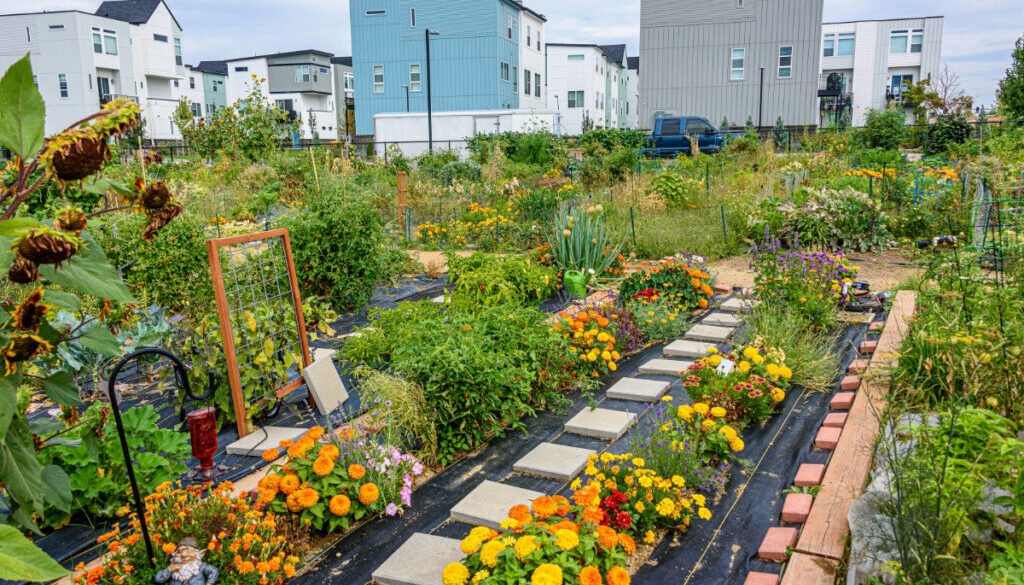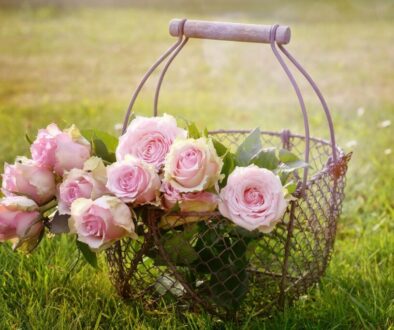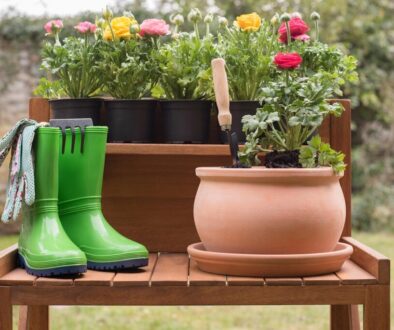The Best Seeds for Every Type of Garden
Choosing Seeds for Small Space Gardening
If you think your tiny yard, balcony, or windowsill can’t host a thriving garden, think again! Small-space gardening is all about choosing the right seeds to maximize your greenery without overcrowding your space. Let’s dig into the secrets of selecting seeds that’ll grow big in small spaces. Spoiler alert: it’s easier than you think!
Start Small, Grow Big
When it comes to small-space gardening, size truly matters. The good news is that many plants are designed to stay compact while producing impressive yields. For example, look for dwarf or compact varieties of your favorite veggies and flowers. Ever heard of patio tomatoes? These little champs grow in tight quarters and still offer a hearty harvest. You’ll also find “bush” or “container” versions of cucumbers, beans, and zucchini—perfect for packing a punch in small pots.
But vegetables aren’t the only small-space heroes. Miniature flowers like marigolds, pansies, and alyssum can add a burst of color to your tiny garden without taking over. Herbs are another excellent choice. Parsley, thyme, and chives grow well in small pots and keep your kitchen well-stocked with fresh flavors. The key is to match your plant size to the space you have available. Think small seeds, big results!
Choose Multipurpose Plants
Why settle for plants that do just one thing when you can get double the benefits? Multipurpose plants are a dream for small spaces. Edible flowers like nasturtiums and calendula add beauty to your garden and flavor to your meals. Leafy greens such as Swiss chard and kale not only provide delicious, healthy food but also look stunning in containers.
Another great option? Herbs like basil, mint, and dill. Not only do they flavor your dishes, but their fragrant leaves can repel pests—a win-win for small-space gardeners. You’ll feel like a pro when your garden pulls double duty. Plus, it’s super satisfying to snack on something you grew yourself. Who needs a full backyard when you’ve got multitasking plants?
Think Vertical for More Variety
When floor space is limited, the only way is up! Vertical gardening lets you make the most of every square inch. The trick is picking seeds for plants that naturally climb or grow upright. Pole beans, peas, and vining cucumbers love to climb, making them ideal candidates for trellises, walls, or even hanging baskets. You’ll be amazed at how much you can grow in a small area using the vertical approach.
Flower lovers can get in on the action too. Sweet peas, morning glories, and climbing nasturtiums bring vibrant color and life to fences and walls. And let’s not forget strawberries! Some varieties thrive in vertical towers or hanging baskets, offering sweet, juicy fruits right at your fingertips. Going vertical not only adds visual interest to your small garden but also creates extra growing space. It’s like giving your tiny garden a loft upgrade!
Look for Fast-Growing Varieties
Small-space gardening often means cycling through crops quickly to make the most of limited room. That’s why fast-growing plants are your best friends. Radishes, for instance, go from seed to harvest in about 30 days. Salad greens like arugula and spinach also grow at lightning speed, giving you a continuous supply of fresh, homegrown goodness.
By planting fast-growing seeds, you can enjoy multiple harvests in the same space throughout the growing season. This approach is especially useful if you’re working with a single container or a small raised bed. Plant, grow, harvest, and repeat—it’s the circle of life, garden-style. Plus, there’s something deeply rewarding about seeing quick results. Patience may be a virtue, but who says you can’t have instant gratification?
Pro Tips for Seed Shopping
Shopping for seeds can feel overwhelming with so many options. To keep it simple, check for labels like “container-friendly,” “bush,” or “patio.” These terms signal that the plants will stay manageable in size. Look for “heirloom” seeds if you want unique varieties and vibrant flavors. For beginners, seed packets with mixed varieties are a great way to experiment without committing to just one type of plant.
Don’t forget to factor in your sunlight situation. If your small space doesn’t get much direct sun, focus on shade-tolerant plants like lettuce, kale, or certain herbs. Reading the seed packet’s instructions can save you a lot of heartache down the line. Yes, it’s tempting to wing it, but a little planning goes a long way in a small garden.
Top Heirloom Vegetable Seeds to Grow at Home
Growing heirloom vegetables at home is like planting little pieces of history right in your backyard or balcony. These seeds have been passed down through generations, cherished for their unique flavors, vibrant colors, and fascinating stories. Whether you’re a gardening newbie or a seasoned green thumb, heirlooms bring something special to your garden. Let’s dig into some of the best heirloom vegetable seeds you can grow at home.
Tomatoes: The Crown Jewel of Heirlooms
If you’ve never tasted a sun-ripened heirloom tomato, you’re in for a treat. Heirloom tomatoes are the royalty of home gardens, and for good reason. Varieties like Cherokee Purple, Brandywine, and Green Zebra offer not just incredible taste but also stunning colors and shapes. Imagine slicing into a deep purple tomato or a striped green one—it’s like art on your plate.
These tomatoes are perfect for fresh salads, homemade sauces, or simply eating straight off the vine. Their rich, complex flavors make store-bought tomatoes seem bland in comparison. Plus, they’re easy to grow! Just give them plenty of sunlight, regular watering, and support for their vines, and they’ll reward you with a bountiful harvest.
Beans: A Treasure Trove of Variety
Heirloom beans are a gardener’s delight. With so many shapes, sizes, and colors to choose from, they’re as beautiful as they are delicious. Varieties like Dragon Tongue, Scarlet Runner, and Blue Lake bring a touch of magic to your garden. Have you seen beans with purple streaks or vibrant red flowers? They’re a showstopper!
Beyond their beauty, heirloom beans are incredibly versatile. They’re perfect for soups, stews, or fresh summer salads. Many heirloom beans are pole varieties, which means they’ll happily climb a trellis, making them ideal for small spaces. They’re also nitrogen-fixers, improving your soil as they grow. Talk about a win-win for your garden!
Carrots: Colorful and Crunchy
Forget boring orange carrots. Heirloom varieties come in a rainbow of colors, from deep purple to sunshine yellow and even white. Varieties like Cosmic Purple, Dragon, and Paris Market are not only visually stunning but also packed with flavor. Imagine pulling up a purple carrot from the soil—it’s like uncovering buried treasure.
Heirloom carrots thrive in loose, well-drained soil. They’re great for snacking, roasting, or adding a pop of color to your favorite dishes. The best part? They’re super fun to grow, especially if you’re gardening with kids. Watching them pull up colorful carrots is a joy for everyone involved.
Peppers: From Sweet to Spicy
Whether you’re into sweet or spicy, heirloom peppers have you covered. Bell peppers like California Wonder add crunch and sweetness to your meals, while hot varieties like Hungarian Wax or Thai Chili bring the heat. And don’t forget about unique varieties like the Chocolate Beauty pepper, which has a rich brown color and a sweet, smoky flavor.
Peppers thrive in sunny spots and love warm weather. They’re perfect for containers or raised beds, making them a great choice for small gardens. Plus, harvesting a mix of colorful peppers feels like picking jewels from your plants. You’ll be the envy of your neighborhood potluck.
Lettuce: Fresh, Crisp, and Fancy
Heirloom lettuce varieties are far from the plain greens you find in stores. Buttercrunch, Black-Seeded Simpson, and Red Romaine bring a variety of textures, colors, and flavors to your salad bowl. Some heirloom lettuces even have frilly edges or deep red hues that make them almost too pretty to eat.
The best part about growing lettuce is how quickly it matures. You can go from seed to harvest in just a few weeks. Plus, you can practice “cut and come again” harvesting, where you pick leaves as needed and let the plant keep growing. It’s like having a never-ending salad bar right outside your door.
Cucumbers: Crisp and Refreshing
Nothing beats a crisp, cool cucumber on a hot day. Heirloom varieties like Lemon Cucumber, Market More, and Armenian are full of personality. Lemon cucumbers are small, round, and bright yellow, while Armenian cucumbers are long and slightly ribbed, adding a unique twist to your garden.
These cucumbers are easy to grow and perfect for trellising, which saves space and keeps the fruit off the ground. They’re great for fresh eating, pickling, or adding to your favorite drinks. Trust me, there’s nothing like the taste of a cucumber you grew yourself.
Flowers That Thrive in Different Climates
No matter where you live, there’s a flower that can turn your garden into a beautiful haven. Whether you’re baking under the desert sun or dealing with chilly mountain mornings, choosing the right flowers for your climate makes all the difference. Let’s explore some floral stars that shine in various weather conditions.
Sunny and Dry: Desert Beauties
If you live in a hot, dry climate, you might think flowers are out of reach. But fear not! Many stunning flowers thrive in arid conditions. Take bougainvillea, for example. These vibrant blooms burst into colors like fuchsia, orange, and white, and they love basking in the sun. Just plant them in well-draining soil, and they’ll reward you with a spectacular show.
Another desert-friendly favorite is the California poppy. This hardy wildflower blooms in dazzling orange and yellow hues, requiring minimal water to thrive. Lavender is also a winner in sunny, dry spots. Not only does it look gorgeous, but its calming scent can also turn your garden into a stress-free oasis. With these flowers, you’ll have a vibrant, low-maintenance garden that laughs in the face of drought.
Cool and Temperate: Year-Round Charmers
For those in cooler, temperate climates, you’re in luck! Your garden can host an impressive variety of flowers that bloom throughout the seasons. One standout is the cheerful daisy. These classic blooms brighten up any space and are surprisingly hardy. Whether you plant Shasta daisies or English daisies, they’ll thrive with minimal fuss.
Tulips are another favorite for temperate climates. These springtime beauties come in a rainbow of colors, making them perfect for adding vibrancy after a long winter. And don’t forget hydrangeas! These lush, full blooms thrive in cooler conditions and can even change color depending on your soil’s pH. Who doesn’t love a flower with a personality?
Warm and Humid: Tropical Showstoppers
Living in a warm, humid climate feels like a blessing when it comes to flowers. The options are endless, and the blooms are often breathtaking. Hibiscus is a tropical favorite, with its large, dramatic flowers that scream “vacation vibes.” These plants adore sunlight and moisture, so they’ll thrive in your garden with regular watering.
Another tropical gem is the bird of paradise. True to its name, this flower looks like a brightly colored bird in flight. It’s the ultimate showpiece for any garden. And if you’re looking for something fragrant, try plumeria. These delicate flowers smell like heaven and are perfect for adding a touch of paradise to your space. With tropical flowers, you’ll feel like you’re living in an exotic retreat.
Cold and Snowy: Frost-Friendly Beauties
If your winters are long and icy, don’t despair. There are flowers tough enough to brave the cold. Pansies are a top pick for frosty conditions. These cheerful blooms can handle light snow and frost, making them perfect for early spring or late fall planting. Plus, their “faces” add a playful charm to your garden.
Hellebores, also known as Christmas roses, are another great choice for cold climates. These flowers bloom in late winter, often pushing through snow to show off their elegant petals. And let’s not forget snowdrops! These delicate white flowers are a true sign that spring is just around the corner. With these cold-hardy plants, your garden can stay lively, even in chilly weather.
Tips for Success Across Climates
No matter your climate, picking the right flowers starts with knowing your zone. Most seed packets and plant labels include this information, so it’s easy to match flowers to your conditions. Pay attention to sunlight needs and watering requirements, as these can vary even among climate-friendly plants.
Mixing perennials and annuals is another smart move. Perennials like hydrangeas or lavender will come back year after year, while annuals like petunias or zinnias let you change up your garden’s look each season. Don’t forget to use mulch to help regulate soil temperature and retain moisture—a lifesaver in both hot and cold climates.
Organic vs. Non-Organic Seeds: What to Know
When starting your garden, choosing the right seeds is a big decision. Organic and non-organic seeds both have their perks, but knowing the differences can help you grow with confidence. Let’s break it all down in simple terms so you can pick seeds like a pro.
What Makes a Seed Organic?
Organic seeds come from plants grown without synthetic chemicals, such as pesticides or fertilizers. These seeds are produced under strict organic farming practices, meaning the parent plants are treated with care and respect for the environment. If you care about reducing chemicals in your garden, organic seeds are the way to go.
Another perk of organic seeds is their adaptability. These seeds often come from plants grown in natural conditions, so they’re tough and resilient. For example, an organic tomato seed may be better prepared to handle pests or diseases without the help of synthetic sprays. Plus, when you grow organic, you’re supporting farmers who prioritize sustainability and healthier ecosystems. Win-win!
What Are Non-Organic Seeds?
Non-organic seeds are the traditional options you’ll find at most garden stores. These seeds come from plants that may have been treated with synthetic fertilizers or pesticides to maximize yield and reduce disease. While they’re not as eco-friendly as organic seeds, they’re often more affordable and widely available.
One advantage of non-organic seeds is their consistent performance. They’re typically bred for uniformity, meaning you’re more likely to get predictable results. This can be great for beginners who want a straightforward gardening experience. Just keep in mind that these seeds may require more intervention, like pest control, to thrive in your garden.
The Cost Debate: Organic vs. Non-Organic
One of the first things you’ll notice is that organic seeds often cost a bit more than non-organic ones. This price difference comes from the extra care and certification processes required for organic farming. But don’t let the price tag scare you away! Think of it as an investment in healthier plants and a cleaner environment.
On the flip side, non-organic seeds are usually more budget-friendly. If you’re starting a large garden or experimenting with new plants, the lower cost can be appealing. However, it’s worth asking yourself what matters most: saving a few bucks or growing plants in line with your values. Either way, you’re making a choice that supports your gardening goals.
Do Organic Seeds Grow Better?
Here’s the big question: do organic seeds actually grow better? The answer depends on your gardening style and conditions. Organic seeds are often hardier because they come from plants that face real-world challenges. If you’re into low-maintenance gardening, organic seeds might make your life easier.
That said, non-organic seeds aren’t slackers! They’re bred for consistency and performance, which can lead to impressive results. If you’re willing to put in the effort with fertilizers or pest management, non-organic seeds can deliver a thriving garden. At the end of the day, both types of seeds have the potential to grow beautiful, healthy plants.
What About GMO Seeds?
While we’re talking about seeds, let’s clear up a common question: are non-organic seeds the same as GMO seeds? The answer is no. Most non-organic seeds are not genetically modified. GMO seeds are a specific category that involves altering the plant’s DNA in a lab, and they’re usually not available to home gardeners. So, whether you pick organic or non-organic, you’re likely steering clear of GMOs.
Making the Right Choice for Your Garden
When deciding between organic and non-organic seeds, think about what matters most to you. Are you passionate about sustainability and reducing chemicals? Organic seeds align perfectly with those goals. Or maybe you’re looking for a cost-effective way to try gardening for the first time. In that case, non-organic seeds are a fantastic starting point.
Another tip is to mix and match. There’s no rule saying you have to pick one side and stick with it. Try growing organic lettuce alongside non-organic sunflowers to see what works best for you. Gardening is all about experimenting and finding what makes you happiest.
Conclusion
Organic and non-organic seeds each bring something unique to the table. Organic seeds offer eco-friendly benefits and hardiness, while non-organic seeds deliver affordability and consistency. Both can lead to a gorgeous, productive garden—it all comes down to your priorities. So grab your seeds, roll up your sleeves, and start planting your dream garden. The choice is yours, and you’ve got this!
Happy Gardening1











